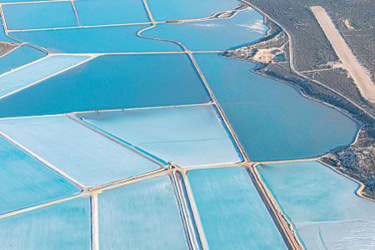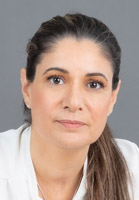Brine Management — A Necessity, Not A Luxury
By Dr. Efrat Miller

Brine is everywhere: desalination plants, gas and oil drillings, energy generation plants, mines, cooling towers, food manufacturing plants, chip fabrication, and many other industries that require high volumes of water. They all generate brine as a byproduct of their processes.
These waste streams pose risks to the environment due to their high concentration of salts which can cause significant damage to soil and vegetation on land as well. Additionally, waste brines can contain toxic chemicals that might be harmful to humans and the environment. For this reason, disposal of waste brine is often strictly regulated. In order to meet regulations that are becoming stricter, brine must be treated prior to discharge.
Treating brine is easier said than done and choosing the right method depends on a large number of factors, such as flow, concentration, geographical location, availability of residual energy sources, and discharge regulations. One way or another, there’s no argument that the most environmentally sustainable approach to managing brine is its treatment.
Brine Treatment
The available alternatives for brine treatment are typically divided into two groups: minimum liquid discharge (MLD), where the objective is to minimize the brine flow as much as possible but with some residual liquid flow, and zero liquid discharge (ZLD), where the water from the brine is extracted, leaving only salt residue. MLD solutions are typically based on a membrane desalination process (namely reverse osmosis), while ZLD solutions also include thermal desalination stages, capable of 'squeezing" the last drops of water from the brine. While the MLD solutions may be considered cost effective for minimizing brine discharge, ZLD solutions are mostly considered expensive, mainly due to the thermal part of the treatment process, and are implemented only when there is no other alternative.
Pushing The Limits Of RO Technology
Two factors generally limit the use of reverse osmosis (RO) technology: osmotic pressure and water chemistry, i.e., saturation of sparingly soluble salts such as calcium carbonate, calcium sulfate, or silica salts in the brine. If RO technology could be developed to overcome the brine chemistry limitation, it can be used far more effectively before switching to more expensive thermal solutions. At IDE Water Technologies, we have developed a set of innovative technological solutions to do exactly that.
Raising The Bar On Brine Treatment
Meet MAXH2O, a unique RO solution that includes an integrated salt precipitation unit for high recovery applications. The MAXH2O Desalter overcomes variable changes in the feed flow and composition, while operating at very high recovery without compromising membrane service life, and pushing the limits of calcium carbonate, calcium sulfate, and silica precipitation. The produced result is pellets of more than 90% dry solids content, which do not require further sludge dewatering treatment.
The MAXH2O Pulse Flow RO (PFRO), a complementary proprietary IDE technology, challenges conventional RO operations by discharging the brine in a pulse flow regime, in short forceful surges, thus not allowing sufficient time for the salts to precipitate. The frequently and rapidly changing osmotic and gauge pressure prevents the formation of biofouling and eliminates the need for chlorine dosing. This allows high recovery and high flux operation.
Brine Management, The IDE Way
Membrane-based solutions for industrial wastewater treatment, such as the MAXH2O, overcome the limits of the challenging water chemistry, thus providing added value to its clients in the form of substantially lower disposal costs. Additionally, this technology can reach 90% recovery of additional clean water for reuse, while requiring smaller thermal systems, resulting in lower CAPEX and OPEX.
At IDE, we have been treating water for more than half a century. We fully understand both the chemistry and treatment of wastewater. Our tailored industrial wastewater treatment solutions have been implemented worldwide, and help many industries — including mining, power, petrochem, chemicals, data centers, microelectronics, semiconductors, and refineries — tackle and overcome their wastewater treatment challenges. 
Dr. Efrat Miller is VP of Assets Management & Business Development at IDE Technologies.
